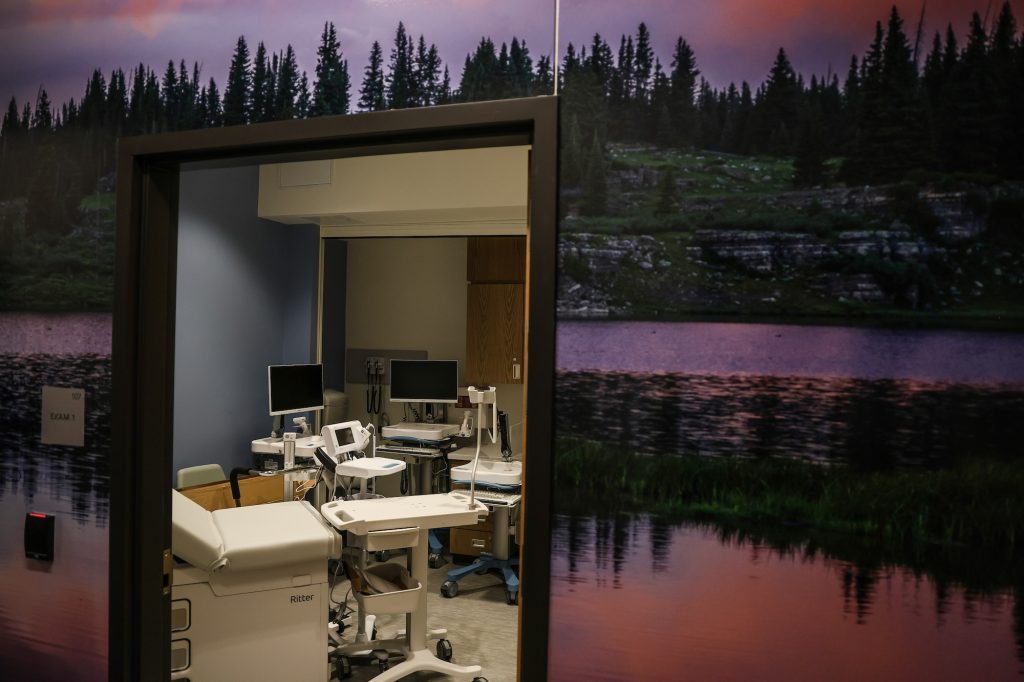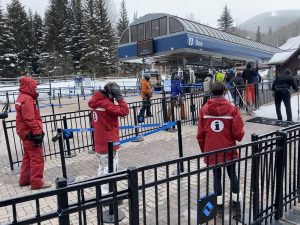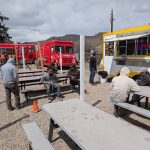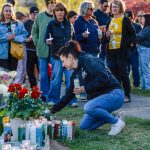A look inside the Precourt Healing Center as new behavioral health facility readies for May opening
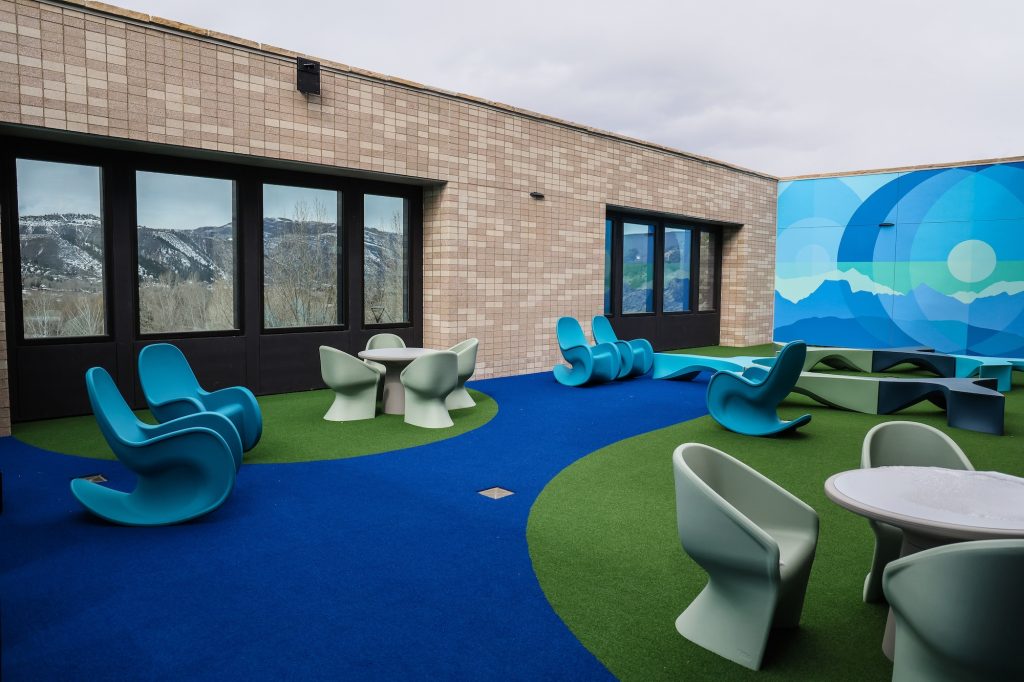
Chris Dillmann/Vail Daily
Vail Health‘s Precourt Healing Center, a new inpatient behavioral health treatment center in Edwards, opens to patients on May 5. The Vail Daily toured the facility with Dr. Teresa Haynes, the director of inpatient behavioral health.
When it opens, the Precourt Healing Center will be the only inpatient mental health facility between Denver and Salt Lake City, Utah, following the closure of West Springs in Grand Junction in March. Medicaid will not pay for treatment across state lines, meaning the Precourt Healing Center will be the only Western Slope option for patients.
The Edwards facility was intentionally built to promote patients’ healing during their stays, which typically range from three to five days, though some will stay longer.
Patients will engage in a wide range of therapies, from traditional talk therapy and group therapy to art therapy, music therapy and exercise. The facility can accommodate up to 28 patients, half adults and half adolescents, split into two age-segregated floors. The adolescent floor will treat patients between the ages of 12 and 18, and the adult floor will treat adults 18 and older.
“We didn’t take over a building that was already in existence and make it a hospital, so there was the freedom to do a lot of these things,” Haynes said. “There is really not a facility like this.”

Support Local Journalism
The Precourt Healing Center will open progressively, beginning with eight adolescent patients and working up to its full 28-bed capacity.
“We really want to be intentional and make sure that we know what we’re doing to set us up for success,” Haynes said.
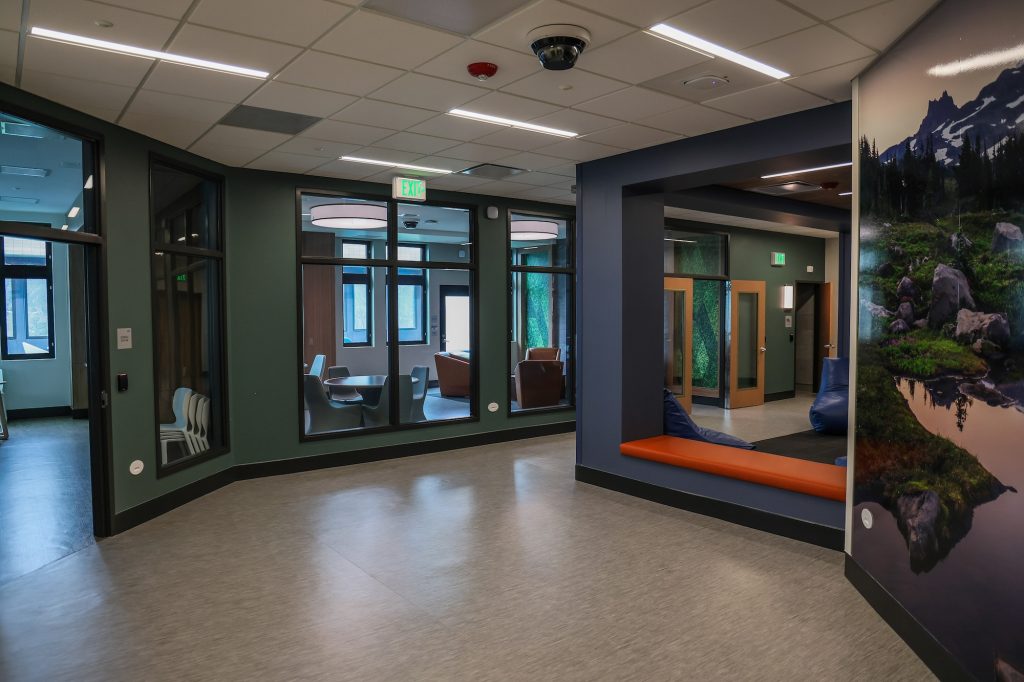
Providing a full spectrum of treatment
One of Vail Health Behavioral Health’s goals is to provide a full spectrum of treatment for behavioral health patients, from in-school offerings to outpatient care to inpatient stays. The Precourt Healing Center is the final piece of the puzzle.
Patients assessed as being in behavioral health crisis and needing a higher level of care can be connected with the Precourt Healing Center, which will not accept walk-ins. Patients will arrive through the private ambulance loading bay, either in ambulances or unmarked vehicles.
Then they will be taken into assessment rooms, where Precourt Center clinicians will obtain more information to help with treatment.
“Everything is really person-centered,” Haynes said. “We want to create respect.”
Many patients will enter the Precourt Healing Center on M1 holds, a 72-hour involuntary commitment of a person in need of emergency mental health care. The three days can be extended if necessary to help the patient stabilize — adolescents and individuals experiencing psychotic symptoms tend to need longer stays, Haynes said.
But the goal at the Precourt Healing Center is to provide the immediate care the patient needs, then set them up to be discharged with a solid long-term treatment plan so they never need to return to inpatient care.
“We will keep people as long as we need to stabilize, to have an appropriate place , and the idea is to get people to a lower level of care as quickly as possible,” Haynes said. “As beautiful as this place is, it is the highest level of care, and people have their lives to get back to.”
A patient is most vulnerable in the 10 days following discharge from a higher level of care.
“So we really want to make sure, whether it’s in our community or another community, that we are wrapping around support,” Haynes said.
Vail Health Behavioral Health has worked for years to create a continuum of care on its Edwards campus, with its outpatient and research facilities immediately adjacent to the Precourt Healing Center at the Wiegers Mental Health Clinic.
But not all patients will be able to access in-person services in Eagle County.
“Some of these smaller surrounding communities don’t have the behavioral health (care) that we have here and so looking at continuing to support (patients),” Haynes said. “It will look more like telehealth.”
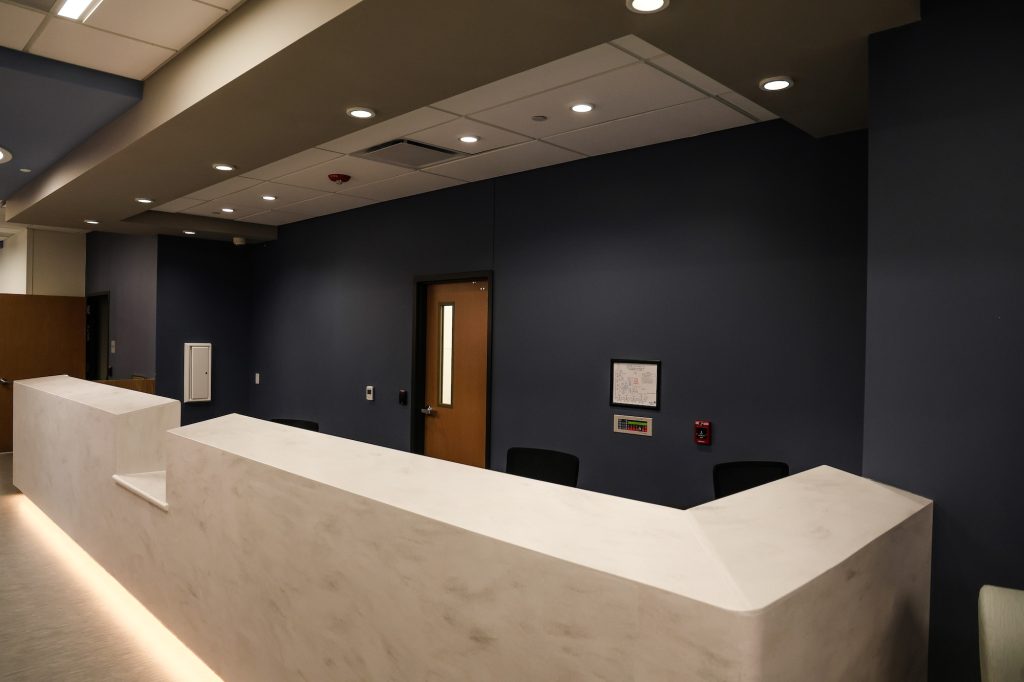
Inside the Precourt Healing Center
Inside the facility, everything has been designed with safety and healing in mind. The walls are either painted soothing shades of blue, green, off white and brown or feature enlarged photographs of nature scenes. Furniture is both aesthetically pleasing and safe, with heavy chairs and rounded table edges.
Patient rooms are all placed around the perimeter of the building to allow for natural light. All bedrooms feature a private bed and bathroom and windows that face the outdoors.
A contactless monitoring platform called Oxevision is located in the top corner of each patient’s room. The tool can take vital signs and detect movement in the room, enabling clinicians to check on each patient without entering rooms every 15 minutes to check on them as in most hospitals.
The Precourt Healing Center is only the second facility in the United States to employ the European technology.
“You hear so often from patients, ‘I could not sleep, they woke me up every 15 minutes,’ and while that’s definitely important to assess safety and that patients are OK, this is a much better way to be able to do that,” Haynes said. “Sleep is huge for healing.”
Bedroom doors have panels that can be opened from the outside, a safety mechanism that allows staff to access patients who have barricaded themselves into their rooms.
During their stay at the facility, patients will not be allowed to keep clothing like leggings, belts or shoelaces. They will be allowed to have their phones, though the exact cell phone policy is still in the works. “We’re trying to look at, ‘How do we do that in a way that makes the most sense?'” Haynes said.
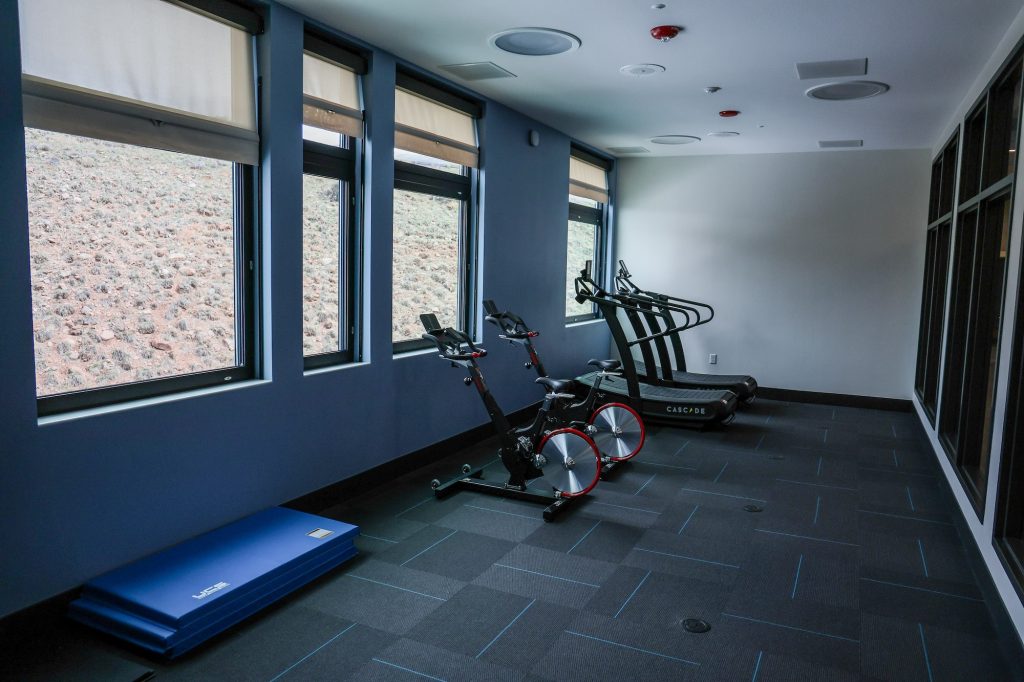
Outside of bedrooms, there are both formal and informal spaces for people to gather throughout the facility. “We don’t want people hanging out in their rooms, alone, in their head all day during their time here,” Haynes said. “We want them out connecting with peers, connecting with staff.”
Patients will be able to order their meals for the next day from a diverse menu of nutritious options. Individually prepared meals arrive on a hotel room service-style tray and will be eaten communally in the dining room.
The facility emphasizes family involvement with patient consent, offering regular daily visitation hours as well as working to accommodate family members whose schedules do not fit with the allocated visiting times. Family visits can also involve family therapy, though this is separate from regular visitation.
Each patient floor of the facility has a gym, a multipurpose room that will be used for art therapy and consult rooms for individual therapy, family therapy and meetings with psychiatrists. These rooms, along with bedrooms, have been treated to minimize the spread of sound.
An enclosed outdoor space — atypical for an inpatient facility — allows patients to spend supervised time outside, and can be used for relaxing, group therapy, yoga therapy and more.
“It’s all about holistic care. We are taking an approach that looks at sleep, nutrition, mindfulness, movement,” Haynes said. “We want patients involved. We want them to feel nurtured, to feel cared for, respected, and have different ways that they can heal, because one thing doesn’t work for every person.”
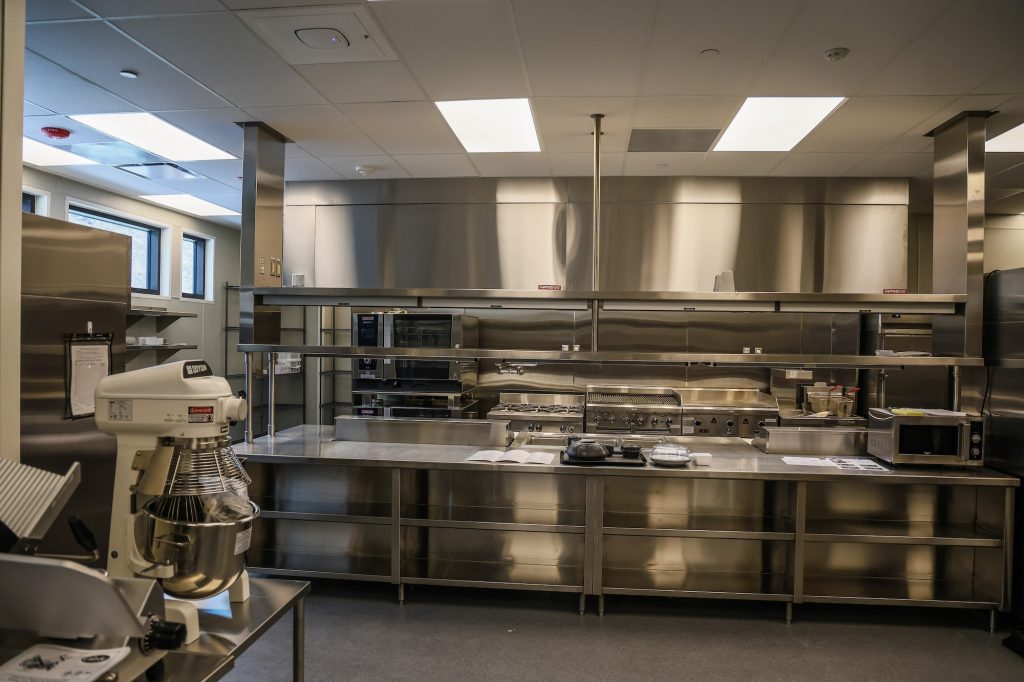
The facility also has a required seclusion room along with a comfort room designed to prevent higher escalation. The comfort room can change the lighting and play music, offering people a respite away from the rest of the floor.
All 100 employees who operate the round-the-clock facility will receive three weeks of specialized training from de-escalation to risk preparedness.
As hiring continues, “what we’re really looking for in a team is relationships,” Haynes said. Precourt Center staff are “connecting with people. We want to make a difference in this way.”
